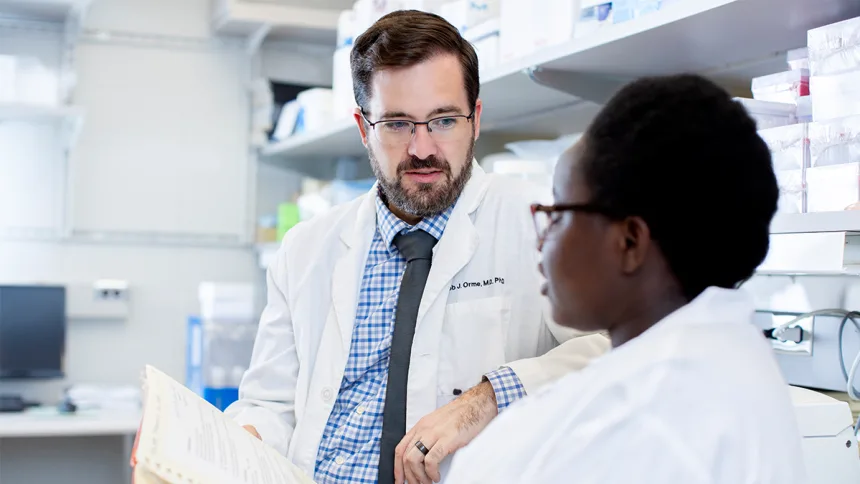We have all heard the responses “Treatment,” “No treatment,” “There is treatment,” and “There will be treatment” during times of medical emergencies. However, the phrase “No treatment” is becoming less common due to medical breakthroughs. Today, advancements in technology and increasing research are bringing new treatments to age-old diseases. The latest innovation from Mayo Clinic, which aims to improve mesothelioma detection in blood, brings hope to a world in need. Year after year, Mayo Clinic continues to lead in developing treatment options, working towards eliminating the phrase “No treatment.”
What is Mesothelioma?
Mesothelioma is a type of cancer originating in the mesothelium, a thin layer of tissue surrounding various internal organs. It commonly develops in the tissue surrounding the lungs, known as pleural mesothelioma. However, mesothelioma can also occur in the tissues of the abdomen, around the heart, or in the testicles. Often referred to as malignant mesothelioma, this cancer is characterised by rapid growth and is considered highly aggressive and fatal.
Who gets Mesothelioma?
The most common cause of mesothelioma is prolonged asbestos exposure. Employees who have been exposed to asbestos for years are between 8% and 13% more likely to get the disease.
The biggest risk of mesothelioma is found in men over 65 who have worked in construction, firefighting, or the military. The majority of occurrences occur in sectors such as construction and manufacturing. Secondary exposure to asbestos can potentially cause mesothelioma in family members of asbestos-exposed workers. About 44% of women are exposed in this way, compared to only 3% of men, making it the most common way for women to be impacted.
Innovative clinical trials are actively exploring potential cures for mesothelioma, while researchers are also focused on enhancing diagnostic methods.
The highest incidence rates are found in regions with a history of industrial activities and industries that heavily involved asbestos. These rates reflect the risk of developing mesothelioma in these areas.
Factors influencing risk
The main cause of mesothelioma is asbestos exposure. Asbestos is frequently used in flooring, brakes, and insulation because of its strength and resistance to heat. Asbestos fibers are released into the air when disturbed, where they can be swallowed or breathed. Eventually, they settle in the stomach or lungs and cause mesothelioma.
Although the precise cause of mesothelioma is still unknown, the illness usually appears decades after exposure. A family history of the disease or secondary exposure from contact with asbestos workers may increase the risk of developing mesothelioma, even though the majority of people exposed to asbestos do not get it.
Breakthroughs in diagnosis
Surgery was the first treatment option for mesothelioma, followed by the introduction of radiation therapy in the 1950s and chemotherapy in the 1970s. Despite extensive research, a cure for the four types of mesothelioma remains elusive. However, advancements in treatment have significantly improved survival rates, with some patients living longer than the typical one-year expectancy.
Personalized therapy and early diagnosis are becoming more possible with the development of new blood-based diagnostic techniques that target chromosomal rearrangements.
Innovative clinical trials are actively exploring potential cures for mesothelioma, while researchers are also focused on enhancing diagnostic methods. These advancements hold the promise of earlier detection, which could ultimately lead to better treatment outcomes and improved prognosis for patients.
Innovative Mayo Clinic test
A novel mesothelioma testing method has been developed by Mayo Clinic researchers that may improve the identification of cancer DNA in blood. This novel method focuses on chromosomal rearrangements, or rearranged or moved DNA sequences, in mesothelioma cancer cells. By detecting these complex DNA patterns instead of depending only on single-point mutations, this technique could help with early diagnosis and open the door to novel therapeutic approaches. The lead author of the study and medical oncologist Aaron Mansfield, M.D., said that this development could greatly enhance the tracking of treatment responses and the identification of cancer recurrence following surgery.
Also Read : Hope Without Injury: Mayo’s Breakthrough in Stem Cell Therapy
Due to its low incidence of single-point genetic alterations, which routine blood tests frequently rely on, mesothelioma is difficult to detect. On the other hand, chromosomal rearrangements provide another diagnostic marker by rearranging words in a sentence. Mesothelioma differs from other malignancies that rely on detecting single-letter DNA alterations because of this. A unique diagnostic opportunity to get around the drawbacks of traditional testing techniques is offered by concentrating on these more significant structural DNA alterations.
Dr. Mansfield and his colleagues used whole genome sequencing in a proof-of-concept study to identify chromosomal alterations in cancer cell DNA, which was published in the Journal of Thoracic Oncology Clinical and Research Reports. In order to detect these rearrangements in blood samples, they then created DNA primers in the lab that perfectly match and bind to them. Precision medicine’s potential has been demonstrated by the development of customized tests to track and monitor cancer DNA in patients through the use of sophisticated molecular tools.
The findings build upon earlier mesothelioma research by the team, including a study identifying genomic signatures that predict which patients may benefit from immunotherapy. Dr. Mansfield’s prior work also demonstrated that chromosomal rearrangements could exhibit neoantigenic potential, meaning they may trigger an immune response against cancer cells. These discoveries could open doors to immunotherapy approaches tailored to mesothelioma patients, further enhancing treatment outcomes.
To summarize, the study shows the feasibility of a blood-based, personalized serial monitoring tool for mesothelioma. Enhancements in junction selection, specimen handling, and validation through larger studies could potentially offer a minimally invasive, tumor-informed disease monitoring tool for mesothelioma, particularly in cases with challenging imaging interpretations.
There is hope in the fight against mesothelioma, thanks to the developments at the Mayo Clinic. Personalized therapy and early diagnosis are becoming more possible with the development of new blood-based diagnostic techniques that target chromosomal rearrangements. In addition to increasing survival rates, these discoveries significantly improve patients’ quality of life. Mayo Clinic’s dedication to medical innovation is consistent as research advances, bringing us one step closer to a time when “No treatment” is never an option.
For more than a hundred years, people from all walks of life have found answers at Mayo Clinic. In fact, more than one million patients from nearly 130 countries travel to Mayo Clinic locations each year for medical care. Mayo Clinic locations in the United States include Rochester, Minnesota; Scottsdale and Phoenix, Arizona and Jacksonville, Florida. As a global organization, they also welcome and care for patients at Mayo Clinic Healthcare in London, United Kingdom. To find out how you can collaborate with the Mayo Clinic or to refer a patient, visit: mayoclinic.org or scan the QR code.





















